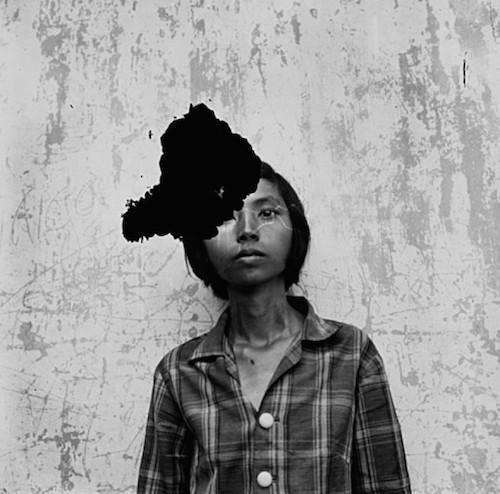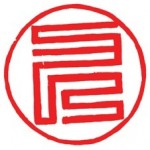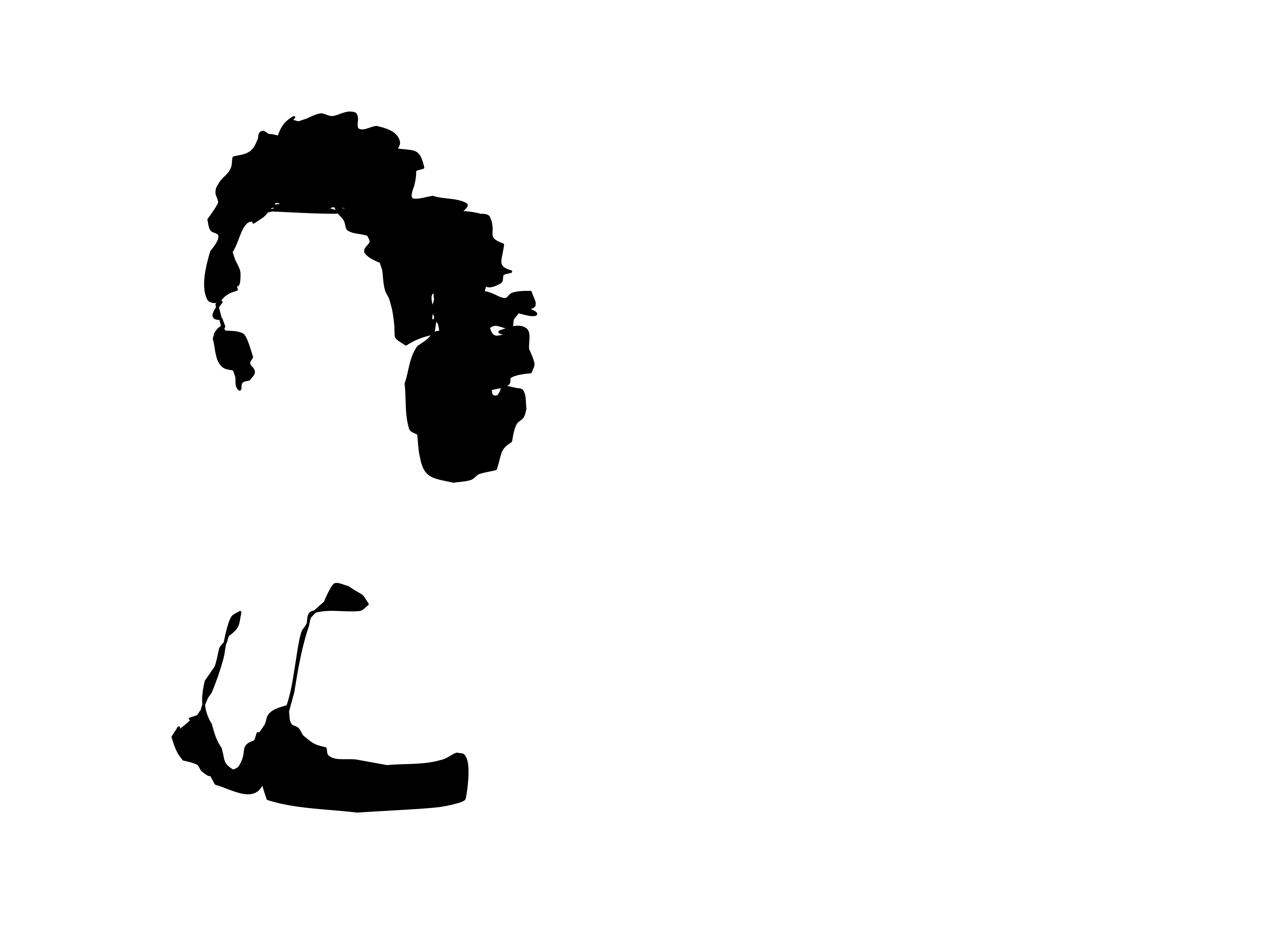Notes for National Corpse Month, Part Five

The day before his wedding, my father took us to the Killing Fields. My sister and I, our stepsister and stepbrothers, their mother and our father, I say, though I don’t remember him being there. We were taken to the Killing Fields, Choeung Ek, and then we were there—walking in the grass, looking at thousands of skulls ...
Walking aimlessly …
The grass, the beaten mounds …
The skulls. No trace ...
The sky was white. The air was vacuous and depressed. There was no beautiful earth, and soundlessness, until a group of children started chasing my stepbrother around the fields. They singled him out. They found him funny, and he was—trying to get away from them but they thought he was playing. They were laughing, which made me laugh, but then he became the attraction, and I became self-conscious of the bones in my face, the unemotional grandfather clock-like mechanics of my jaw.
Earlier that day we went to Tuol Sleng, the prison where tens of thousands of Cambodians were detained, interrogated, tortured, and executed, by the Khmer Rouge (1975-1979). Most of the prisoners were taken to Choeung Ek where they were interred in mass graves. Interred is not the right word; they were poured.
The prisoners are remembered in photographs—thousands of black-and-white photographs, thousands of prisoners, thousands of people about to die, in grids on walls and panels in rooms that are inescapably empty. I wanted to acknowledge something about each face, like details on an altar, but photography had already removed them to the grave. The people were inventoried. The inventory succeeded them. What else could be known? The people were murdered. No, the photographs did not inventory the people. The photographs inventoried their murder. What was I acknowledging? That people are tender because they are idiosyncratic until the moment they are extinguished? Is this the last time they were specific? The subject is murder. There was an altar, yes, but the details did not redeem the wounds of the dead, but refracted the armature of the Khmer Rouge.
Almost as soon as I entered the photographs, I heard someone crying. It started on the ceiling, dripped down the walls, and was climbing up my legs. I peered around a wall and saw in the corner, with her nose practically touching the glass separating the dead from her breath, the American actress Ashley Judd. Her crying, her tears, were filling Tuol Sleng. Her tears overwhelmed the room. Quiet, they echoed, so her privacy echoed. But her tears did not solemnize the silent struggle of the dead to assert themselves beyond the photographs, but glazed the emptiness of their passage into death.

This is what I know, or think I’m remembering right, about my stepbrother: he grew up and still lives in Chinatown, NYC; he is or was a cake maker or decorator; he has a daughter in Harlem he’s never seen; he fell in love with a Cambodian girl whose face was disfigured by a dog; and he has a shunt in his head. I see his shunt, for example, in the Killing Fields. It precedes and succeeds any recollection of his face.
When his brain started hemorrhaging next day at the wedding, his mother, drunk and dancing, shouted through a pyramid of champagne glasses, He has a shunt in his head—he’ll be fine!
I only spent time with him once before. He read one of my poems online and was disturbed, and asked if the poem was true. The online magazine no longer exists, but this is what it was:
I accompanied my father to Laos in 2003. One night, my father was eating oranges in bed. We were sharing a room in a guesthouse. The peels were gathering in the sheets and sliding onto the floor. He was on his stomach with his hearing aids out (he’s deaf), peeling oranges over his pillow. That night I dreamed five women entered our room and formed a circle around my father’s bed. In the dream I woke up—I could hear the women’s feet and their breathing—but my father did not. The five women stood over him, looking down at his body. In the morning, I wrote the dream down in the form of a very short poem.
Does your father have a lot of girlfriends? In my stepbrother’s mind, I had made available some secret that would undo our parents’ relationship. It was a dream, I said, the women weren’t actually there. He wasn’t appeased. And it was a poem, but maybe he was right. Dream or poem or actual night, my father had become a senseless fruit, colorful yet decomposing. The five women had come to harvest what remained of his body. How could I explain this to my stepbrother? He wasn’t my brother anyway, but a stranger with a bleeding brain. The women, meanwhile, were essential. If every character in a dream is the dreamer, then the five women were poets, tending to my father’s corpse. How wonderful, I thought, for five women to make one poet over the citrus-smelling corpse of a deaf man.

Looking at thousands of photographs, looking at thousands of skulls: the photographs and the skulls, outside and inside, complementary, cruel. In between there is no corpse. The corpses are underground or not at all.
A skull neuters the corpse. It makes it abstract and palatable.
But you don’t eat …
Unless you want to render existence …
Leave only the number pinned to the chest of the person about to die …
To the insensate rattle of the second-hand (helping).
The skulls, meanwhile, negated the Killing Fields, which burned off the edges of being there. The Killing Fields simultaneously radiated out from the skulls to encompass the entirety of life to the edge. All existence was drawn into the opaque darkness behind the bone, and standing there, staring into it, I was contributing to the collection of skulls—the temple of idols, the reunion.

If you don’t know anything about the history of a place, the rise and rise and genocidal history of a place that is that place—if you don’t know anything about the people who were killed and the people who did the killing and the people who neither killed nor did the killing but did the killing—if you don’t know anything about the history that is the present moment and vice versa and the next, and the bodies underneath your feet and the bodies in the air you’re breathing, that is America.

Ashley Judd's tears: the American corpse is an orphan. It is a corpse isolated from other corpses. American corpses are family members and friends—bodies that are familiar. What repulses us more: the corpses of family members and friends or the corpses of strangers? The corpses of strangers are indiscriminate death. Death visits the mass, indiscriminately. A mass of corpses reinforces the concept of the body as work, the body of work.
Casualties become common. Strangers become family in the eyes of repulsion, or do I mean it the other way? Casualties, unseen from America, are puffy. Abstract, amoebic, gratuitous, puffy. The sun shines white from the inside—the mortal remains of outer space.
America is the struggle to process it's experiment—without corpses.
The sun is a hen.
Ambivalence in America takes the form of awe, though occasionally ambivalence surprises itself and expresses a clear, unequivocal emotion with tremendous and unequivocal clarity. That is the living hand ...
And is brief.
What's the least amount of a body that could still be considered a corpse? For example: a body without arms is a corpse, but are arms without a body?
There is no population.
It only takes one—one corpse—to paralyze the mind.

I've written about the Killing Fields three times. This (what you're reading), a poem (published here, and in Portuguese), and another poem I revised for seven years until only this drawing remained:

The corpse is isolated, floating free of the world in the way of the spirit.
The corpse is the spirit of the world, but without the potential for connection and reintegration ...
That adds a touch of silver ...
To what I wrote, I say, NO POEM ...
Without spirit, but does it become?
The corpse contiguous with the fetus?
The corpse is contiguous with the fetus. Living between is divergent ...

I bought a book in the Killing Fields. The book was by a woman who survived the genocide. The cover was white except for the woman’s face. For years she shared her story with family and friends and acquaintances and strangers, who listened and made noises. Some of their noises expanded into questions; the woman repeated certain parts. Eventually the story became familiar as a story the woman memorized. You should write a book, everyone said. So she wrote a book by which her story was enshrined. And yet the story outside the story, or inside the story—that is, her life—became more intense because it fractured and dissolved and became impossible to organize. The book she had written began to mock her inability to move on but in truth it was like she had not yet entered.
Now the book is a white rectangle hovering above the ground. It instates a low ceiling. I was wrong about the book being a grave. That's what I thought, but it's the sky above it. I cannot see it, but feel it—with my throat. That is how I remember the Killing Fields—with my throat. And books; the grass, the beaten mounds, the skulls, children chasing my stepbrother around the imperial stupa—suspended in my throat, growing hairy and indigestible down to my stomach.

Are there some places where poetry does not exist? Where the trauma is complete? Where there are no spirits left ...
Peeling off the arc?
Some corpses catch in the thickets
Some corpses catch in the reeds
We don't want their spirits hanging around
—Sarith Peou, Corpse Watching

The Killing Fields resolved into a dreadful commonplace. The experience of being there evaporated. No, not the experience—that is stalwart, autonomous. I evaporated—from the experience. The story is either too-often told or not told often enough. Either way, a face on a white book cover, the conception of a transcendent self, is an eradicable stain on a seamless, insensitive sky.
Color drains from the face. It seems like fear, but it's the earth siphoning blood, and the earth is the dead. That is the memorial.
The skulls were parental. They rejected the chorus. Even the children seemed sentenced to a kind of obligation. The CHILDREN—they chased my stepbrother FOREVER! His skull had been emended. His shunt bounced through the air like a mushroom.

What is the question? When does a body become a corpse? When does a corpse become?
Is that it? Is that all?

My father lives in Laos. I haven’t seen him in four years. My sister hasn’t seen him in eight. What if we never see him again? What if we never see him again and he dies? What if he's already dead? He's not, I would know. Would I? If he died and no one told us, how long would it take before we found out, before we knew, before we could feel he was dead?
What if we cannot feel it?
At what point will he become a corpse? Will his corpse transpire in intervals, or happen all at once? If I never see him again, has he become a corpse already?
What will his wife think if she reads this? She already believes a photograph and a book of poems means we want her and our father to die ...
Four years, eight years—it is not so long. Not as long as 104, 108, but neither is that.
The corpse eats itself down to the first syllable, which will take more than this life to pronounce.
One of the most indelible images I have of my father is of him peeling oranges in bed. His curly black hair, his naked arms, his naked back, the thin white sheet pulled up his body, orange peels gathering in the thin white sheet, orange peels sliding onto the floor. He takes his hearing aids out at night, small slugs laid to rest on the sill. What I meant to say—what I mean to say—is that when I grow up, I want to be five women at once.
[SEE ALSO: Notes for National Corpse Month Parts One, Two, Three & Four]
Brandon Shimoda (he/him) is the author of several books of poetry and prose, including The Grave on ...
Read Full Biography

